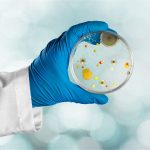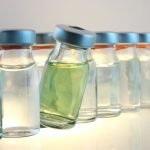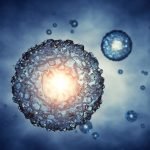Monitoring Hormone Therapy with 24-Hour Urine Testing: A Menopause Case Study
Pushpa Larsen, ND
As more NDs venture into the use of bioidentical hormones for treating symptoms of menopause and preventing age-related degeneration, it is incumbent on us to know that we are using these therapies in safe and effective ways. Presented herein is a case using the 24-hour urine hormone profile to assess hormone function, minimize risk, and assist in making therapeutic decisions.
April 2009
“Caroline” is a 53-year-old woman who had a hysterectomy and an oophorectomy 2 years ago. She is 5 ft 5½ in tall and weighs 105 lb, with a blood pressure of 128/86 mm Hg. Her family history is remarkable for osteoporosis in her mother and maternal grandmother. Her mother also had a stroke at age 54 years. Caroline is a new patient who had been put on bioidentical estradiol by her obstetrician/gynecologist after her hysterectomy, primarily to prevent bone loss. She has few menopausal symptoms and does not want to give up her hormone therapy.
Current Daily Medications and Supplements
Her current regimen includes the following: estradiol (0.5 mg in sublingual drops), a multivitamin/mineral supplement, vitamin D (1000 IU), evening primrose oil (600 mg), calcium (500 mg), coenzyme Q10 (30 mg), and a strong tea that she boils from licorice root and drinks twice a day because she likes it and has heard that it is good for adrenal support.
Symptoms that Caroline describes on her hormone questionnaire as severe are insomnia, fatigue, anxiety, stress, and sensitivity to chemicals. As moderate symptoms, she lists bone loss, decreased libido, and vaginal dryness. Mild symptoms include aches and pains, allergies, and headaches.
A 24-hour urine collection was performed, and a comprehensive hormone panel was run to evaluate sex hormone and adrenal hormone sufficiency. The panel was run using gas chromatography–mass spectrometry methods1 that take into account both free and conjugated estrogens. Conjugated estrogens, unlike those bound to sex hormone–binding globulin, are easily “deconjugated” to active forms.
Results of the 24-Hour Urine Hormone Panel
Estrogens
As summarized in the Table, Caroline’s levels of estrone, estradiol, estriol, and total estrogens are all high, far above the physiological reference ranges (luteal ranges are used for women who are supplementing with exogenous hormones). Estrogen levels this high are typically seen in 24-hour urine hormone reports when a woman is taking an oral estrogen, even when it is bioidentical and sublingual. Because hormone levels, symptoms, and response to therapy are generally reflected accurately in a 24-hour urine hormone panel using gas chromatography–mass spectrometry technology, there is reason to believe that the high levels of estrogens seen when a patient is taking oral estrogens are a more accurate representation than serum levels, which may not show these elevations.
There are many good reasons to avoid oral estrogens. Foremost is the significantly increased risk for clots and strokes,2 which is especially a concern in Caroline’s case because her mother had a stroke at the age Caroline is now. Other problems that have been identified with oral estrogens are elevated C-reactive protein levels,3 decreased free testosterone levels, heightened risk for gallbladder disease and acid reflux,4,5 and increased triglycerides levels. Oral estrogen may also increase the risk for development of liver cancer. These elevated risks associated with oral estrogen therapy, including sublingual forms, are not increased with transdermal or transmucosal delivery of estrogen.
Caroline’s estrogen quotient is low at 0.2. The estrogen quotient is derived by dividing the estriol level by the sum of the estrone and estradiol levels. A quotient of less than 1.0 is associated with increased risk for breast cancer, which makes Caroline’s high estrogen levels even more of a concern.6,7
Phase I Estrogen Metabolites
Two-hydroxy (2-OH) estrone, a protective estrogen,8 is at the upper end of the luteal range, while 16α-OH estrone, a carcinogenic estrogen, is more than 6 times the upper limit of the luteal range. Caroline’s ratio of 2-OH estrone to 16α-OH estrone, another indicator of risk for breast cancer (and for prostate cancer in men) is 0.2, which is strongly associated with increased risk for breast cancer.9 A ratio of between 2.0 and 4.0 is considered optimal. Caroline’s level of 4-OH estrone, considered the most carcinogenic of the estrogens, is in the middle of the luteal range.
Phase II Estrogen Metabolites
2-Methoxyestrone and 2-methoxyestradiol are considered protective estrogen metabolites. In fact, 2-methoxyestradiol is being used by some clinicians to treat women with a history of or current breast cancer because it increases differentiation of cells and promotes apoptosis.10-12 2-Methoxyestrone has less biological activity and is considered by some to be a reservoir substrate that can be converted to 2-methoxyestradiol. Both of these metabolites are dependent on methyl donors for their formation, and their levels are indicators of the health of the methylation pathways. Caroline’s phase II metabolites are high, consistent with her other estrogen levels.
Progesterone
The structure of progesterone makes it difficult for it to enter the urine in significant amounts. The progesterone metabolite pregnanediol has been found to be a reliable marker in urine for assessing progesterone levels. Caroline’s pregnanediol level is low, below even the postmenopausal range. This is especially concerning because of Caroline’s very high estrogen levels. Progesterone has an important role in opposing estrogen to limit proliferation of breast and endometrial tissue,13 in addition to its role in maintaining bone density.14
Androgens
Caroline’s dehydroepiandrosterone (DHEA) and testosterone levels are both low, out of the normal range. Women vary widely in how much testosterone they need to feel “good,” and some do well with low-normal levels. Caroline’s fatigue, decreased libido, and vaginal dryness are symptoms consistent with low testosterone levels. While often thought of as just a reservoir for testosterone and estrogen production, DHEA in fact has many other important functions and is essential for minimizing the degenerative effects of aging.15 Both DHEA and its metabolites have anticancer activity.16
Caroline’s testosterone metabolites (5α- and 5β-androstanediol) and DHEA metabolites (androsterone and etiocholanolone) are low or at the low end of their reference ranges. This confirms that she does not have much to metabolize to begin with.
Adrenal Function
Glucocorticoids
Caroline’s cortisol level (145 μg/24 hrs) is significantly above optimal (reference, approximately 90 μg/24 hrs), and her cortisone level (83 μg/24 hrs) is significantly below optimal (reference range, 120-130 μg/24 hrs). Cortisone levels exceeding cortisol levels by about 30% (or a 0.7 ratio of cortisol level to cortisone level) and in the optimal ranges provide adequate reserves for times of high demand. Caroline’s higher cortisol level is probably contributing to her insomnia, slightly elevated blood pressure (especially for her size), and anxiety. In her case, licorice root is not a good intake choice because she does not need more cortisol and does not have sufficient reserves.
Despite the higher cortisol level, her next 3 metabolite levels add up to only 3113, well below the 5000 to 7000 expected in a healthy woman. Her 11β-OH metabolites are also low in the reference range, adding to the overall picture of stress that leads to adrenal deficiency.
Mineralocorticoids
Caroline’s aldosterone level (2.9 ng/dL) is low, which is likely related to stress. Low aldosterone levels may also be associated with age-related hearing loss,17 a symptom that commonly is overlooked because other symptoms are more demanding or patients may consider it “just a part” of growing older. Physicians at the Tahoma Clinic in Renton, Washington (http://www.tahomaclinic.com/) are investigating whether aldosterone supplementation may be helpful in reversing this type of hearing loss.
The last 3 adrenal metabolite levels (allo-tetrahydrocorticosterone, tetrahydrocorticosterone, and 11-dehydrotetrahydrocorticosterone) are sensitive indicators of adrenal stress, both chronic and acute. Caroline’s metabolites are on the low end and are evidence that chronic adrenal fatigue is looming if nothing is done to support her adrenals and teach her some stress management skills. High levels would have been an indicator of high stress levels during the collection period.
Growth Hormone
Growth hormone (GH) level is usually assessed by measuring insulinlike growth factor 1 in serum, as GH has too short a half-life in serum for direct measurement to be meaningful. However, insulinlike growth factor 1 is an imperfect measure of GH levels.18 In a 24-hour urine collection, GH level can be measured directly and accurately; therefore, this measure is accepted as documentation of adult GH deficiency for purposes of supplementation.19 Caroline’s GH level is low compared with an “antiaging” reference range among healthy individuals aged 18 to 35 years. Endogenous GH production can be increased with adequate sleep, sufficient protein intake, and exercise, especially interval training.
Thyroid
The 24-hour urine values for free triiodothyronine (T3) and free thyroxine (T4) are sensitive and can provide objective confirmation of low thyroid function when a patient has symptoms but serum values all appear normal (even by naturopathic standards). Caroline’s T4 level is in the optimal range of about 1000 ng/24 hrs, while her T3 level is suboptimal. This suggests that she is not converting T4 to T3 as well as she should and would probably benefit from selenium sulfide supplementation.
Urinary Minerals
These values include sodium and potassium levels and the ratio of sodium level to potassium level. Urinary minerals are good indicators of dietary intake. An ideal ratio of sodium level to potassium level is approximately 1.5, and higher ratios are associated with elevated blood pressures. Caroline’s ratio is higher than optimal primarily because her potassium level is at the low end of the reference range.
Enzyme Activity
High 5α-reductase activity is associated with hirsutism, acne, and polycystic ovary syndrome in women; with male pattern baldness and benign prostatic hypertrophy in men; and with insulin resistance and obesity in both sexes. Low 5α-reductase activity is associated with undervirilization in men and with lower libido in both sexes. Caroline’s 5α-reductase activity falls at the low end of the reference range. Reducing or discontinuing her evening primrose oil, which is a natural 5α-reductase inhibitor, may help restore some of her libido by allowing more of her testosterone to be metabolized down the 5α-reductase pathway, the metabolites of which are more potent than 5β-reductase metabolites.
Recommendations
- Discontinue oral estradiol and replace with compounded 80% estriol and 20% estradiol cream (2.5-5.0 mg), applied to the labia majora on days 1 to 25 of the month. This is higher than a typical starting dose but is recommended to reduce the likelihood of developing hot flashes or other symptoms. The dose can be gradually reduced as she gets accustomed to lower levels.
- Discontinue licorice root and evening primrose oil.
- Add extra fiber and/or calcium-d-glucarate20 to help bind up the excess estrogen so that it will not be recirculated.
- Add diindolylmethane (300 mg QD) to improve the ratio of 2-OH estrone to 16α-OH estrone.9
- Add progesterone (50-100 mg) as a compounded cream, applied to the labia majora on days 11 to 25 of the month. Part of this can also be given as an oral dose instead of a cream to help with sleep.
- Add dehydroepiandrosterone (5-10 mg sublingually daily).
- Consider adding testosterone (1 mg).
- Add adrenal support nutrients, herbs, and glandulars.
- Practice meditation, guided imagery, or another stress reduction/relaxation modality.
- Add selenium sulfide (200 mcg QD) or 2 Brazil nuts daily.
- Increase potassium-rich foods such as avocado, banana, and dark green leafy vegetables.
August 2009
On seeing her first test results, Caroline became very anxious about her high estrogen levels and elected to discontinue hormone therapy altogether. She also discontinued licorice root tea and evening primrose oil. Since then, she has been having menopausal symptoms that are bothersome, and she now wants to reconsider bioidentical hormone therapy. Her blood pressure is 110/74 mm Hg.
Current Daily Medications and Supplements
Her regimen is the same as before, with the addition of selenium sulfide (200 mcg QD), adrenal support, and bone support. The evening primrose oil and licorice root were discontinued as recommended. She took diindolylmethane inconsistently for a short while but has not taken any for the past month.
Caroline’s only severe symptoms are hot flashes and night sweats. Her insomnia and anxiety are now described as mild. Tearfulness and depression have been added to her list of moderate symptoms. Mild symptoms are unchanged except for headaches, which are no longer a problem. These changes in her symptom picture are reflected in the results of her second 24-hour urine hormone panel.
Results of the 24-Hour Urine Hormone Panel
Estrogens
Caroline’s levels of estrone, estradiol, estriol, and total estrogens are now at the extreme low end of the postmenopausal reference range, consistent with levels seen in other postmenopausal women not receiving hormone therapy. They are also consistent with the severity and type of symptoms, although not all women with such low levels report severe symptoms. Caroline’s estrogen quotient is now 1.0, the cutoff point for decreasing breast cancer risk.
Phase I and Phase II Estrogen Metabolites
Because her primary estrogen levels are so low, Caroline does not have much to metabolize to 2-OH estrone and 16α-OH estrone. Her 16α-OH estrone level is below the limits of detection, and her ratio of 2-OH estrone to 16α-OH estrone cannot be calculated. Such a low 16α-OH estrone level may put her at increased risk for osteoporosis, already a concern. This is an important consideration for Caroline, who witnessed her grandmother in disability and pain from osteoporosis. Caroline’s 4-OH estrone, 2-methoxyestrone, and 2-methoxyestradiol levels are consistent with the rest of her low estrogen levels.
Progesterone, Testosterone, DHEA, and Androgen Metabolites
No supplementation was made of any of these hormones, and the levels reflect this.
Adrenal Function
Caroline’s cortisol level is now below the optimal level, and her cortisone level has stayed pretty much the same. She is sleeping better without the high cortisol level she previously had, and her anxiety is significantly reduced. Her blood pressure has normalized. Her adrenal function has improved slightly but is still below par, as seen in her metabolites, which add up to 4392, still well below the optimal range. Caroline has been on an adrenal support protocol for only a little longer than 3 months, so it is not surprising that she still has suboptimal levels of adrenal hormones. The rest of her adrenal metabolite levels are consistent with this, showing slight improvement and less than robust levels.
Growth Hormone
Caroline’s GH level has moved up into the reference range, likely due to her greatly improved quality of sleep.
Thyroid
Caroline’s free T3 and T4 levels are now both looking much healthier, and her conversion of T4 to T3 has improved. Note that her thyroid function improved without the addition of thyroid hormones and after the commencement of an adrenal support protocol.
Urinary Minerals
Sodium and potassium levels are looking better. The ratio of sodium level to potassium level looks great at 1.4.
Enzyme Activity
5α-Reductase Activity
Discontinuing evening primrose oil has allowed Caroline’s 5α-reductase activity to increase closer to midline levels. She reports no change in her libido, but this is not surprising given her adrenal fatigue and low androgen levels.
Ratio of Cortisol Level to Cortisone Level
Caroline’s ratio of cortisol level to cortisone level is still somewhat elevated but is significantly down from her initial report. This is most likely the result of discontinuing licorice root intake and starting on a program of adrenal support.
Recommendations
- Add compounded 80% estriol and 20% estradiol cream (1.25 mg), applied to the labia majora on days 1 to 25 of the month. Because Caroline went off of her previous hormone therapy “cold turkey,” there is no need to start her at the higher dose previously recommended.
- Add compounded progesterone cream (25-50 mg), applied to the labia majora on days 11 to 25 of the month.
- Add dehydroepiandrosterone (5-10 mg sublingually daily).
- Consider adding testosterone (1 mg) if libido is not sufficiently improved with DHEA.
- Continue adrenal support as before.
July 2010
Caroline has been on a bioidentical hormone therapy regimen for a little longer than 10 months now and is feeling significantly better. Her symptoms are greatly reduced or manageable, and her energy and mood have improved dramatically. She says that she has gotten back the “old me” that she thought was gone forever, along with her youth. She purchased some guided-meditation CDs and listens to them regularly.
Current Daily Medications and Supplements
Her current regimen includes compounded 80% estriol and 20% estradiol cream (1.25 mg) used as recommended, progesterone (25 mg) in compounded cream (applied to the labia majora on days 11-25), and additional compounded oral progesterone (25 mg) taken before bed daily. Caroline was still having some sleep problems and found that oral progesterone was helpful in this regard. She also was using dehydroepiandrosterone (10 mg QD in a liposomal spray) and testosterone cream (1 mg QOD). After some trial and error, every-other-day testosterone seemed to be the best choice for her.
Caroline no longer reports any severe symptoms. All of her moderate symptoms are gone except for fatigue, which is now mild, and bone loss, which was noted to be improved on recent dual-energy x-ray absorptiometry imaging. She still reports mild anxiety and allergies. Her third 24-hour urine hormone panel reflected the improvement.
Results of the 24-Hour Urine Hormone Panel
Estrogens
Estrone, estradiol, and estriol levels are all within normal range for a woman in the luteal phase, which is the range used for women supplementing with bioidentical hormone therapy. Her level of total estrogens is 33.2 μg/24 hrs, which is a respectable value. Her estrogen quotient is a healthy 2.1.
Phase I and Phase II Estrogen Metabolites
Although Caroline’s 2-OH estrone and 16α-OH estrone levels are within normal limits, her ratio of 2-OH estrone to 16α-OH estrone is only 1.4, below the range of 2.0 to 4.0 that is associated with protection against breast cancer (and against prostate cancer in men). Caroline’s 4-OH estrone, 2-methoxyestrone, and 2-methoxyestradiol levels look healthy, with her 4-OH estrone level staying low, where we want it to be.
Progesterone and Androgens
Caroline’s progesterone level is adequate at 895 μg/24 hrs. There is room to increase her progesterone level to improve balance with her estrogens levels.
Her DHEA and testosterone levels are reflective of supplementation, and her androgen metabolites are also improved. Caroline reports that her sex drive and sex life have improved, although her testosterone level is just barely one-third of the way up the reference range. This is probably also in part due to her greater energy and improved mood.
Adrenal Function
Caroline’s cortisol and cortisone levels are now at close to optimal levels. Just as important, her next 3 metabolites add up to 5381, in the 5000 to 7000 range where we like to see them in a woman. The rest of her adrenal metabolite levels also show improvement, confirming that the adrenal support protocol Caroline has been following has made a difference.
Growth Hormone
Caroline’s GH level continues to improve. Because the sex hormones are all to a greater or lesser extent GH secretagogues, this is not surprising.
Thyroid
Caroline’s free T3 and T4 levels continue to look good, but conversion of T4 to T3 has decreased again. Selenium is necessary for that conversion.
Urinary Minerals
Her sodium and potassium levels are looking healthy. The ratio of sodium level to potassium level is near perfect at 1.8.
Enzyme Activity
Caroline’s 5α-reductase activity continues to look good. Her ratio of cortisol level to cortisone level indicates that there are adequate stores of cortisol for times of stress.
Recommendations
- Continue with the current bioidentical hormone therapy regimen. Consider increasing the progesterone dosage.
- Add diindolylmethane (300 mg QD) to improve the ratio of 2-OH estrone to 16α-OH estrone.
- Increase the selenium dosage.
Conclusion
Caroline’s case is a good illustration of how one can use 24-hour urine testing to monitor bioidentical hormone therapy in menopause. The 24-hour urine hormone panel is invaluable in assessing hormone balance in younger cycling women and in men. It provides a wealth of information about hormone balance, risk factors, and adrenal function that is unavailable through serum or saliva testing.
 Pushpa Larsen, ND graduated from Bastyr University with a doctorate in Naturopathic Medicine and certificates in Naturopathic Midwifery and Spirituality, Health and Medicine. She has worked as a Research Clinician for the Bastyr University Research Institute and as Affiliate Clinical Faculty for Bastyr University, training students in her clinic. She was in private practice in Seattle for 10 years before joining Meridian Valley Lab as a Consulting Physician and maintains a small private practice primarily focused on bio-identical hormone therapy. She consults with hundreds of doctors every year on the use and interpretation of 24-hour urine hormone profiles, as well as other tests offered by Meridian Valley Lab.
Pushpa Larsen, ND graduated from Bastyr University with a doctorate in Naturopathic Medicine and certificates in Naturopathic Midwifery and Spirituality, Health and Medicine. She has worked as a Research Clinician for the Bastyr University Research Institute and as Affiliate Clinical Faculty for Bastyr University, training students in her clinic. She was in private practice in Seattle for 10 years before joining Meridian Valley Lab as a Consulting Physician and maintains a small private practice primarily focused on bio-identical hormone therapy. She consults with hundreds of doctors every year on the use and interpretation of 24-hour urine hormone profiles, as well as other tests offered by Meridian Valley Lab.
1. Wolthers BG, Kraan GP. Clinical applications of gas chromatography and gas chromatography–mass spectrometry of steroids. J Chromatogr A. 1999;843(1-2):247-274.
2. Canonico M, Fournier A, Carcaillon L, et al. Postmenopausal hormone therapy and risk of idiopathic venous thromboembolism: results from the E3N cohort study. Arterioscler Thromb Vasc Biol. 2010;30(2):340-345.
3. Eilertsen AL, Høibraaten E, Os I, Andersen TO, Sandvik L, Sandset PM. The effects of oral and transdermal hormone replacement therapy on C-reactive protein levels and other inflammatory markers in women with high risk of thrombosis. Maturitas. 2005;52(2):111-118.
4. Cirillo DJ, Wallace RB, Rodabough RJ, et al. Effect of estrogen therapy on gallbladder disease. JAMA. 2005;293(3):330-339.
5. Jacobson BC, Moy B, Colditz GA, Fuchs CS. Postmenopausal hormone use and symptoms of gastroesophageal reflux. Arch Intern Med. 2008;168(16):1798-1804.
6. Lemon HM. Pathophysiologic considerations in the treatment of menopausal patients with oestrogens: the role of oestriol in the prevention of mammary carcinoma. Acta Endocrinol Suppl (Copenh). 1980;233:17-27.
7. Lemon HM, Heidel JW, Rodriguez-Sierra JF. Increased catechol estrogen metabolism as a risk factor for nonfamilial breast cancer. Cancer. 1992;69(2):457-465.
8. Bradlow HL, Telang NT, Sepkovic DW, et al. 2-Hydroxyestrone: the ‘good’ estrogen. J Endocrinol. 1996;150(suppl):S259-S265.
9. Lord RS, Bongiovanni B, Bralley JA. Estrogen metabolism and the diet-cancer connection: rationale for assessing the ratio of urinary hydroxylated estrogen metabolites. Altern Med Rev. 2002;7(2):112-129.
10. Mooberry SL. New insights into 2-methoxyestradiol, a promising antiangiogenic and antitumor agent. Curr Opin Oncol. 2003;15(6):425-430.
11. Ricker JL, Chen Z, Yang XP, et al. 2-Methoxyestradiol inhibits hypoxia-inducible factor 1α, tumor growth, and angiogenesis and augments paclitaxel efficacy in head and neck squamous cell carcinoma. Clin Cancer Res. 2004;10(24):8665-8673.
12. Chua YS, Chua YL, Hagen T. Structure activity analysis of 2-methoxyestradiol analogues reveals targeting of microtubules as the major mechanism of antiproliferative and proapoptotic activity. Mol Cancer Ther. 2010;9(1):224-235.
13. Kim JJ, Chapman-Davis E. Role of progesterone in endometrial cancer. Semin Reprod Med. 2010;28(1):81-90.
14. Seifert-Klauss V, Prior JC. Progesterone and bone: actions promoting bone health in women. J Osteoporos. 2010;2010:e845180.
15. von Mühlen D, Laughlin GA, Kritz-Silverstein D, et al. Effect of dehydroepiandrosterone supplementation on bone mineral density, bone markers, and body composition in older adults: the DAWN trial. Osteoporos Int. 2008;19(5):699-707.
16. Hazeldine J, Arlt W, Lord JM. Dehydroepiandrosterone as a regulator of immune cell function. J Steroid Biochem Mol Biol. 2010;120(2-3):127-136.
17. Tadros SF, Frisina ST, Mapes F, Frisina DR, Frisina RD. Higher serum aldosterone correlates with lower hearing thresholds: a possible protective hormone against presbycusis. Hear Res. 2005;209(1-2):10-18.
18. Audí L, Antonia Llopis M, Luisa Granada M, et al; Grupo Español de Estudio de la Talla Baja. Low sensitivity of IGF-1, IGFBP-3 and urinary GH in the diagnosis of growth hormone insufficiency in slowly-growing short-statured boys: Grupo Español de Estudio de la Talla Baja [in Spanish]. Med Clin (Barc). 2001;116(1):6-11.
19. Butt DA, Sochett EB. Urinary growth hormone: a screening test for growth hormone sufficiency. Clin Endocrinol (Oxf). 1997;47(4):447-454.
20. Calcium-d-glucarate. Altern Med Rev. 2002;7(4):336-339.










